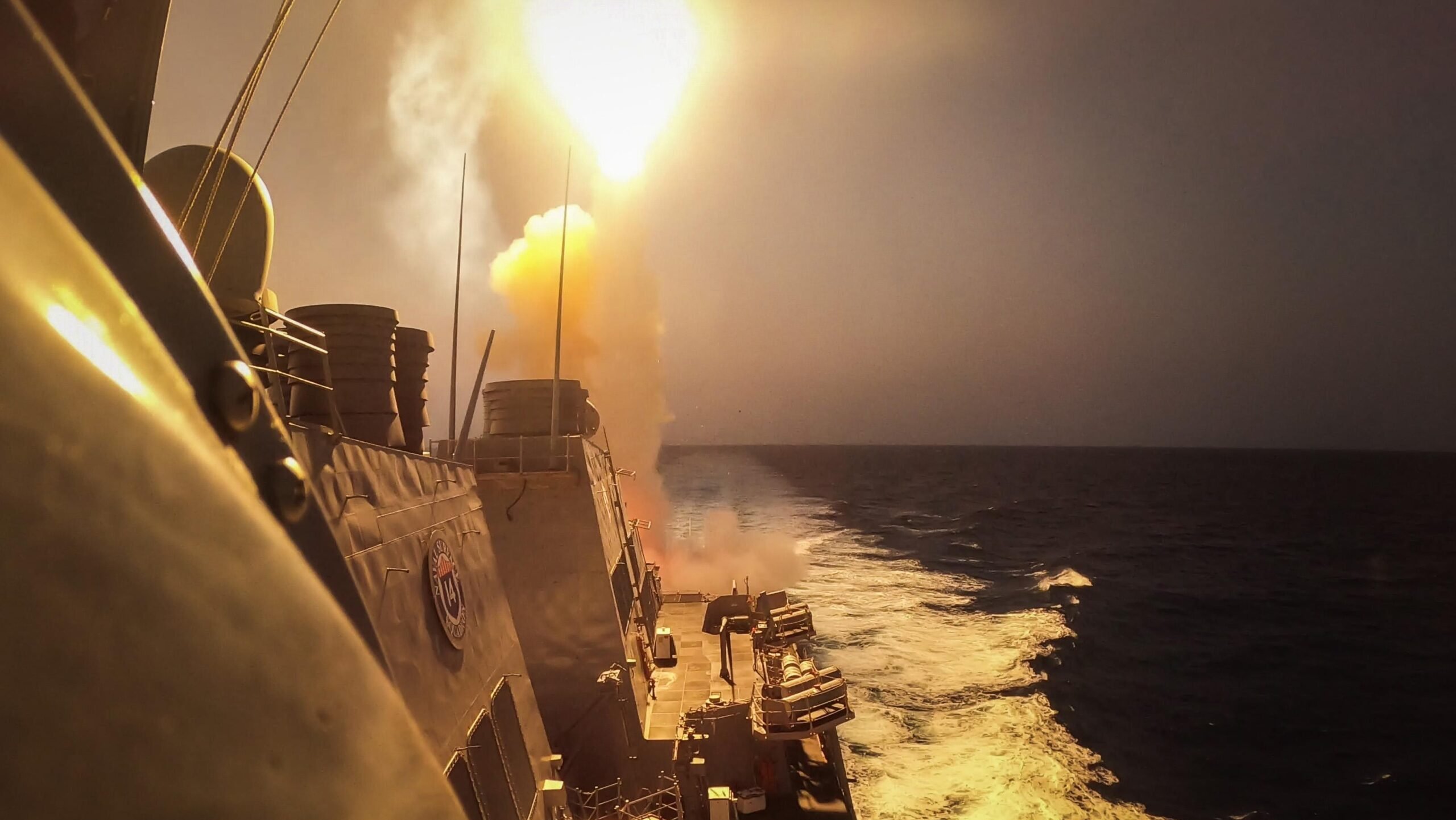
The Arleigh Burke-class guided-missile destroyer USS Carney (DDG 64) defeats a combination of Houthi missiles and unmanned aerial vehicles in the Red Sea, Oct. 19. (U.S. Navy photo by Mass Communication Specialist 2nd Class Aaron Lau)
SEA AIR SPACE — As US Navy ships shoot down aerial and seaborn threats in the Red Sea, the service’s top officer suggested today there’s a stretch on munition stockpiles due to past under-investment, but the race is on to shore up any shortfall.
“As you know, we did not invest in munitions, so we are where we are, because … it was not our focus in the past,” Chief of Naval Operations Adm. Lisa Franchetti told a small group of reporters today on the sidelines of the Sea Air Space Exposition.
“But over the past few years, really starting on Admiral [Michael] Gilday’s watch, he elevated munitions to be our primary focus area, and we are investing and sending that demand signal to industry that we need more munitions,” she continued.
The drain on the Pentagon’s munitions stockpiles came into public view following Russia’s invasion of Ukraine when it became clear Kyiv would lean heavily on the United States and NATO allies to provide it with arms to fight back the Russians. But for the Navy, that problem became more acute following Hamas’ October 2023 attack on Israel. Since then, Navy warships have taken up positions in the Red Sea and Mediterranean Sea with the goal of defending shipping lanes and trying to prevent the conflict from spreading throughout the Middle East.
In the Middle East, US warships have routinely used exquisite weapons such as Standard Missile-6 to take down much less expensive drones and other threats launched by the Houthi rebel group in Yemen.
RELATED: Crowded waters: Who’s doing what in the international hotspot of the Red Sea
The confluence of events has created a real anxiety in the Pentagon about how long it can continue to support Ukraine, defend shipping lanes in the Middle East and maintain a sufficient stockpile back home.
“I know from the Marine Corps perspective, we’re working very hard to get on the right side of the cost curve,” Marine Corps Lt. Gen. Karsten Heckl, that service’s top requirements officer, has previously said of the issue.
In the hours following Franchetti’s remarks to reporters, her second in command, Vice Chief of Naval Operations Adm. Jim Kilby told an audience here that the directions to the commodores on station in the Middle East are clear: “If you have the shot, you must take it.”
“The Houthis are not the highest-end threat that we are preparing for, which is China,” Kilby said. “But they are a thinking adversary, and they are advancing their tactics, and they are learning every day, which is what we want to do as well.”
Franchetti and other Navy brass will head to Capitol Hill later this week to begin defending the service’s annual budget request. During the Pentagon’s annual budget rollout in March, Under Secretary Erik Raven said the service’s munitions asks this year are relatively small because the fiscal year 2024 request sought the start of multiyear procurement contracts for several Navy programs such as the naval strike missile and the long range anti-ship missile.
“The munitions issue is here and now,” Franchetti said when asked about her message to lawmakers. “There is a supplemental on the Hill that has some funding in there for Navy again for our munitions. And again, that’s a conversation that we’re continuing to have.”























